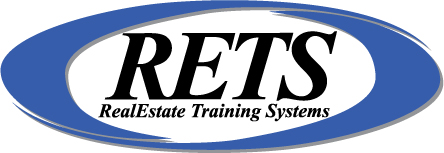How Are Chinese Drywall Litigation Cases and TREC SoP's Tied Together In Texas?
No one is suggesting home inspectors be mandated to inspect or examine the actual drywall or determine its origin. TREC does not require inspection specifically for Chinese drywall, therefore, some inspectors believe they need not be concerned.
- SoP requires the inspector to report the presence of and approximate average depth of attic insulation and thickness of vertical insulation, when visible. (Why not take a few seconds to look under the attic insulation for the manufacturer’s name?)
- SoP requires inspectors to inspect and report deficiencies in service panel corrosion, condition of the wiring, overcurrent devices, circuits, circuit interrupters, branch circuit conductors, smoke alarms, damaged receptacles, damaged switches, evidence of arcing, deficiencies in wiring, wiring terminations, junctions, junction boxes, devices and fixtures, heating deficiencies in controls and operating components, heating elements, switches, thermostats, condition of conductors, scale buildup, cooling system refrigerant pipe, evaporator or condensing coils, damaged casing coils, deficiencies in the condition of the fins, thermostats, deficiencies in electrical wiring or junction boxes, deficiencies in water supply lines, gas distribution systems, water heater corroded fittings and valves, gas connector materials and connections, including appliances.
- All of the above items can show the effects of out-gassing. Several home inspectors did not realize what they found until they observed anomalies in their photos while preparing their report. The class is designed to aid inspectors in recognizing the effects during their normal home inspection and what/when conditions should be reported to the inspector’s client. Some inspectors may take the opportunity to further expand their inspection services for additional fees. And TREC CE APPROVED 16 HOURS.
- “The corrosion damage resulting from the sulfur compound emissions from the Chinese drywall may constitute ‘direct physical loss’ both to the electrical and HVAC systems in the home, as well as the wiring and personal property such as appliances and electronics. ‘The systems were initially in an undamaged state, but due to exposure to the emissions from the drywall, they were changed to an unsatisfactory and damaged state under Texas law.’ Trinity Industries v. Insurance Co. of North America, supra.” Attorneys, Patrick J. Wielinski and Lauren C. Hornsby, Cokinso, Bosien & Young. Arlington, TX. – State Bar of Texas 7th Annual Advanced Insurance Law Course, April 8-9, 2010 – Dallas. http://www.cbylaw.com/filebin/files/wielinski/pjw-Chinese_Drywall.pdf
- “United Technologies v. American Home Assurance Co. Here the corrosion of the electrical wiring, switches, HVAC, appliances, etc. due to exposure to the off-gassing of the Chinese drywall is due to an external force, that is the sulfur compounds. As such, it appears that a corrosion exclusion will likely not apply.” Attorneys, Patrick J. Wielinski and Lauren C. Hornsby, Cokinso, Bosien & Young. Arlington, TX. – State Bar of Texas 7th Annual Advanced Insurance Law Course, April 8-9, 2010 – Dallas. http://www.cbylaw.com/filebin/files/wielinski/pjw-Chinese_Drywall.pdf
Six months ago, this class was first contemplated, for education of inspectors (and others) on the effects of Chinese drywall, and risk management to minimize claims, costing $59 per s/f of the home in damages, thus keeping insurance premiums low. Many policies exclude Chinese drywall, leaving the inspector completely bare.
April 8, 2010, State Bar of Texas 7th Annual Advanced Insurance Law Course - Texas courts and attorneys began to address case law for corrosion damage to the electrical wiring, switches, and HVAC systems in the home, as well as the personal property such as appliances and electronics, etc. due to exposure to the off-gassing of the Chinese drywall.
A national home builder acknowledged in its latest SEC 10-Q filing (for the quarterly period ended May 31, 2011) , that tainted corrosive “Chinese” drywall is an industry-wide problem. We quote from their filing (page 27) (even though we caution against the use of "defective" in this context):
"Defective Chinese drywall is an industry-wide issue as other homebuilders have publicly disclosed that they have experienced similar issues with defective Chinese drywall."
National Association of Home Builders Published Plan of Attack for Chinese Drywall March 16, 2011. Reports of toxic drywall have been levied in 42 of the nation’s 50 states. States heavily-affected include Florida, Texas, Alabama, Louisiana, Mississippi, and Virginia. Much of the drywall has proven to be noxiously defective, emitting sulfuric gasses that are harmful to humans, and that corrode metal components within the walls, including wiring and HVAC components. NAHB's Chinese Drywall Task Force’s mission was to identify a permanent solution to problems with drywall emitting or off-gassing corrosive compounds, which can lead to blackening of copper electrical wiring and air conditioning evaporator coils and can cause mechanical, electrical and electronic failures. The report, authored by the NAHB’s Chinese Drywall Task Force and released March 16th, is the culmination of over a year of research and investigation by the group, and outlines a “plan of attack” for addressing problematic drywall in homes.
“Remediation includes removal and restoring/replacing of all drywall products, cabinetry and joinery, carpeting, all low-voltage wiring, HVAC coils and ductwork, plumbing fixtures and piping, electrical distribution components, including receptacles, switches and circuit breakers and fire-suppression sprinkler systems and fire safety alarm devices, including smoke and carbon monoxide alarms and gas service piping from a home.” from NAHB's Chinese Drywall Task Force Report
